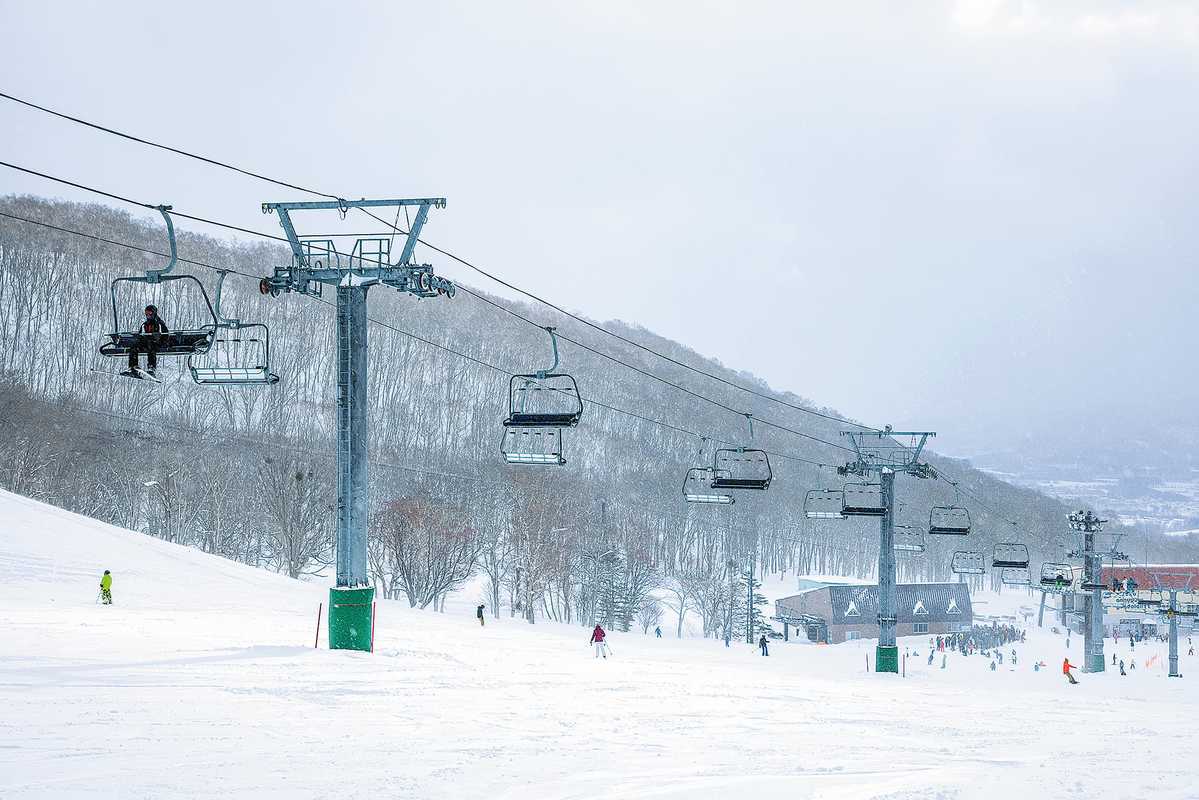
Niseko ski resort in Hokkaido, Japan. YANG WEI / FOR CHINA DAILY
Many ski resorts in Japan are facing difficulty in staying open. As the number of domestic skiers and snowboarders declines significantly, whether or not resorts can attract foreign tourists determines their success or failure.
The number of skiers and snowboarders in Japan fell to 4.6 million in 2023 from 18.6 million in 1993 due to increasing options for leisure activities and a declining birthrate, according to a white paper on leisure issued by the Japan Productivity Center.
Ski resorts are one after another being forced to shut down due to financial difficulties caused by declining visitor numbers and the monetary burden of refurbishing old facilities. Data from the Japan Sports Agency shows that the number of ski resorts across the nation dropped to 449 in 2021 from 1,669 in 1985 when the number peaked.
Located at the foot of the 3,026-meter-tall Mount Norikura in the Northern Japanese Alps, the Mt Norikura Snow Resort opened in 1961 and is known for its powder snow. The resort offers more than 10 courses for all levels — from beginners to experts.
"I come here 60 to 70 times during the winter season. This ski resort has a long history and a wide variety of courses. Their quality of snow is good," said a 71-year-old man from Matsumoto, Nagano Prefecture. He had visited Mt Norikura Snow Resort in the same city in mid-January.
However, Mt Norikura Snow Resort was in danger of closing this season. Visitor numbers during the last winter season halved from around a decade ago to about 40,000. The main cause was lack of snowfall. In October, Blue Resort Norikura, the Matsumoto-based company that ran the resort, notified the local community that it was discontinuing operations.
Local volunteers who were concerned about the situation created a group to support the ski resort. They sought support online and in the same month achieved their target of 35 million yen ($231,000) to continue running the resort. Including the amount raised via crowd-funding, the group accumulated a total of over 50 million yen. They set up a council that manages the ski resort — which was able to open this winter.
"We received a surprisingly large amount of support not only from local residents, but from people across the country," said Toshinobu Sato, 46, the general manager of the resort. "We would like to fulfill their expectations."
To cultivate demand, the resort offers free lift tickets for people aged 18 and younger.
The resort had fallen into financial difficulties because it failed to attract foreign tourists, in addition to the declining numbers of Japanese skiers, according to Sato. Of the about 40,000 visitors to the resort last season, foreign tourists comprised just 1 percent.
Ski resorts in Hakuba Village in the same prefecture are crowded with foreign visitors since it takes about only three hours from Tokyo Station to Hakuba via the Hokuriku Shinkansen bullet train and an express bus.
On the other hand, it takes more than four hours to get to Norikura. Visitors must take an express train from Tokyo's Shinjuku Station and transfer to a bus. The trains and buses do not run frequently and there are few restaurants in the area where foreigners can enjoy a meal.
The resort did not sit by idly. It tried things like selling tickets on websites for foreign visitors, but their efforts had little effect apparently.
"The popularity of Hakuba and Hokkaido's Niseko ski resort areas is nothing new," said Ken Yamaguchi, 51, the representative of the management council. "They have been working at attracting foreign tourists for more than 20 years. Compared to them, Norikura lacked the ability to promote itself."
It is unclear whether Mt Norikura Snow Resort will be able to keep running next winter and beyond. But Yamaguchi stressed the importance of keeping a ski resort.
"In terms of the region's value, there is a big difference between having a ski resort and not having one," Yamaguchi said.
"It is important to make sure to draw in people from within and outside the prefecture. In addition, given the declining number of Japanese skiers, it is also necessary to attract foreign tourists. We will consider ways to achieve that with the entire community."
THE JAPAN NEWS